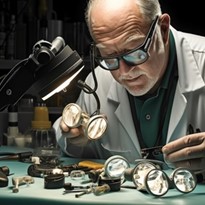In the rapidly advancing landscape of modern surgery, the integration of surgical headlights and loupes with essential medical equipment has emerged as a pivotal technological stride. This article delves into the technical facets and pragmatic aspects of harmonizing surgical headlights and loupes with X-ray machines, presenting a comprehensive analysis of their compatibility, practicality, and the manifold benefits they bestow upon contemporary operating rooms. As surgical procedures demand unwavering precision and seamless coordination among diverse instruments, the convergence of these disparate tools is poised to redefine surgical practices. Through a dispassionate and informed exploration, this discourse navigates through the intricate web of advantages and challenges inherent in this integration, shedding light on its implications for medical professionals, patients, and the broader realm of healthcare.
I. Compatibility with Other Surgical Equipment and Instruments
A. Seamless Compatibility: Enhancing Surgical Integration
In the dynamic realm of modern surgery, the harmonious collaboration between various surgical equipment and instruments is pivotal.
The need for seamless compatibility arises from the intricate nature of surgical procedures, where precision and fluidity are paramount.
Compatibility ensures that tools work in concert, reducing disruptions, optimizing efficiency, and ultimately leading to improved patient outcomes.
B. Advantages of Integrating Surgical Headlights and Loupes with X-ray Machines
Enhanced Precision during Procedures
- Integration of surgical headlights and loupes with X-ray machines extends the surgeon's visual acumen beyond conventional boundaries.
- Illuminating the surgical field with focused light mitigates the risk of overlooking minute details, crucial for intricate procedures.
- Loupes further magnify the surgical site, empowering surgeons with unparalleled precision, especially when working in confined spaces or with delicate anatomical structures.
Reduction in the Number of Devices in the Operating Room
- Operating rooms often resemble a symphony of technology, with each device playing a vital role. Integrating functions simplifies this symphony.
- The amalgamation of surgical headlights, loupes, and X-ray machines condenses the array of equipment present, creating a tidier and more organized environment.
- This streamlined setup optimizes the utilization of space and resources, minimizing clutter and enhancing the surgeon's focus on the procedure.
- Streamlined Workflow: Ensuring Operational Efficiency
- The integration of surgical tools carries the promise of a smoother workflow, transforming surgery into a well-choreographed performance.
- Surgeons, assisted by integrated equipment, experience a reduction in the need to transition between disparate devices.
- The ease of transitioning from examining magnified details through loupes to evaluating X-ray images seamlessly translates into time saved and fewer interruptions.
- Such operational efficiency extends beyond surgeons to the medical staff, as communication becomes clearer and roles become better defined in the orchestrated process.
II. Hands-Free Options and Mounting Mechanisms
A. Exploring Hands-Free Options and Mounting Mechanisms
Headband-Mounted Systems
- Headband-mounted systems offer a practical solution for integrating surgical headlights and loupes.
- Surgeons can wear the headband comfortably, allowing for easy adjustment and precise alignment.
- The integrated system eliminates the need for separate adjustments of both the surgical loupe and headlight, enhancing efficiency.
Clip-On Attachments
- Clip-on attachments provide a versatile method of integrating surgical equipment.
- These attachments can be easily clipped onto existing surgical gear, such as eyeglasses or face shields.
- Surgeons benefit from a personalized setup without the need for additional headbands or bulky accessories.
Integration with Existing Surgical Gear
- Integrating surgical headlights and loupes with existing surgical gear streamlines the surgeon's attire.
- Surgical loupes can be incorporated into eyeglasses, eliminating the need for a separate device.
- This approach maximizes convenience and minimizes clutter in the operating room.
B. Discussing Benefits of Hands-Free Integration
The integration of surgical headlights and loupes through hands-free options and mounting mechanisms offers a range of benefits, both for surgeons and the overall surgical process.
Freedom of Movement
- Surgeons experience enhanced freedom of movement as their hands remain unburdened.
- This unrestricted mobility is crucial for intricate surgical procedures that require precise hand positioning and movements.
Reduced Strain on Surgeons
- Traditional methods of using separate surgical equipment can lead to physical strain over extended procedures.
- Hands-free integration reduces strain on surgeons' necks and shoulders, promoting better ergonomic practices.
Efficiency and Workflow
- Integrated systems ensure that surgeons have all necessary equipment readily available.
- Surgeons can focus on the task at hand without interruption, leading to smoother workflows and potentially shorter procedure times.
Enhanced Precision
- The alignment of surgical loupes and headlights through integrated mechanisms enhances the precision of surgical maneuvers.
- Accurate visualization and targeted illumination contribute to improved surgical outcomes.
Minimized Distractions
- With integrated systems, surgeons can avoid distractions related to adjusting separate equipment during procedures.
- This concentration translates to heightened focus on the patient's needs and procedural intricacies.
Optimized Sterility
- Hands-free integration reduces the need for surgeons to touch equipment during procedures, helping to maintain sterile conditions.
- This is particularly important in minimizing the risk of infections and ensuring patient safety.
III. Sterilization Methods for Surgical Loupes and Headlights
A. Importance of Maintaining Sterile Equipment
In the controlled environment of the operating room, sterility stands as a paramount concern.
Sterile equipment helps prevent infections, ensures patient safety, and maintains the integrity of surgical procedures.
Any breach in sterility can lead to complications that might compromise the well-being of patients and the success of the surgery.
B. Detailing Sterilization Methods for Surgical Loupes and Headlights
- Compatibility with Autoclaves
Autoclaves, trusted tools for sterilization, subject equipment to high-pressure steam.
Surgical loupes and headlights designed for autoclave compatibility can undergo this process.
Steam sterilization effectively eliminates microorganisms, rendering equipment safe for use.
- Use of Sterilizable Materials
Incorporating materials that can withstand the rigors of sterilization is essential.
Materials such as medical-grade stainless steel and heat-resistant plastics are commonly employed.
These materials ensure equipment integrity while enduring repeated sterilization cycles.
C. Highlighting Enhanced Sterility in Integrated Systems
- Integrated Systems Enhance Sterility
Integrated surgical headlights and loupes demonstrate an advantage in maintaining sterility.
The seamless integration of these devices with X-ray machines reduces unnecessary handling.
Fewer touchpoints decrease the likelihood of contamination and minimize the need for re-sterilization.
- Reduced Risk of Contamination
Standalone devices often necessitate removal during various stages of surgery.
Integrated systems, however, remain in place, reducing exposure to potential contaminants.
This continuity in equipment usage lessens the probability of breach in the sterile field.
IV. Overcoming Challenges of Glare and Shadow Management
A. Addressing Common Challenges
Integrated surgical headlights and loupes have undoubtedly revolutionized modern operating rooms, providing surgeons with enhanced visualization and precision. However, like any technological advancement, they come with their own set of challenges. Glare and shadows are two significant issues that arise due to the integration of these devices. Effectively managing these challenges is crucial to ensuring optimal surgical outcomes.
- Glare: Glare occurs when the intensity of the light source exceeds a comfortable threshold for the surgeon's eyes. This phenomenon can hinder the surgeon's ability to clearly see the surgical site and lead to visual discomfort.
- Shadows: Shadows can be cast by various objects, including surgical instruments, the surgeon's hands, and even the surgeon's own body. These shadows can obscure critical anatomical details and impede precise movements.
B. Technological Solutions
To mitigate the problems of glare and shadows, innovative technological solutions have been developed, allowing surgeons to work seamlessly with integrated surgical headlights and loupes. These solutions not only enhance visibility but also contribute to the overall efficiency and safety of surgical procedures.
- Adjustable Light Intensity: One key solution to combat glare is the incorporation of adjustable light intensity in the integrated devices. Surgeons can fine-tune the brightness according to their specific needs and preferences, ensuring optimal illumination without causing discomfort. This adjustability minimizes glare-related issues and promotes a clearer view of the surgical field.
- Precision Beam Direction: Precision beam direction technology enables surgeons to precisely direct the light where it's needed most, minimizing the chances of glare or unwanted shadows. This level of control allows surgeons to focus the light exactly where they are working, enhancing visibility without causing unnecessary reflections or obstructions.
- Coordinated Movements with X-ray Machines: Integration with X-ray machines is another remarkable advancement that aids in managing glare and shadows. Modern operating rooms often incorporate X-ray imaging for real-time guidance during procedures. By synchronizing the movements of integrated surgical devices with X-ray machines, surgeons can ensure that the light source doesn't interfere with the imaging process, effectively reducing both glare and shadows.
C. Impact on Procedural Accuracy and Patient Safety
The successful management of glare and shadows holds profound implications for procedural accuracy and patient safety. The integration of surgical headlights and loupes is intended to improve the precision of surgical maneuvers, and effective glare and shadow management contribute directly to this goal.
- Enhanced Visualization: By minimizing glare and shadows, surgeons can maintain a consistent and clear view of the surgical site. This heightened visibility enables them to execute procedures with greater accuracy, reducing the likelihood of errors or complications.
- Reduced Eye Strain: Proper glare and shadow management also leads to reduced eye strain for surgeons. Prolonged exposure to glare can cause eye fatigue, which can compromise a surgeon's performance. By optimizing the lighting conditions, integrated devices help surgeons remain focused and alert throughout lengthy procedures.
- Patient Safety: Ultimately, patient safety is paramount. Clear and well-illuminated surgical fields contribute to safer procedures, as surgeons can work confidently and make precise decisions. Moreover, reducing the risk of shadows ensures that critical anatomical structures are fully visible, minimizing the potential for inadvertent damage.
The integration of surgical headlights and loupes into modern operating rooms represents a remarkable technological advancement that holds significant promise for the field of surgery. This comprehensive exploration of compatibility with other surgical equipment, hands-free options and mounting mechanisms, sterilization methods, and the management of glare and shadows underscores the practicality and benefits of this integration. Surgeons are empowered with enhanced precision, streamlined workflows, and improved sterility, all of which contribute to heightened procedural accuracy and patient safety. As the boundaries of surgical technology continue to expand, the integration of surgical headlights and loupes stands as a testament to the commitment of the medical community to harness innovation for the betterment of patient care. This integration, with its capacity to optimize surgical practices, represents a pivotal stride toward the future of surgery and underscores the importance of harmonizing cutting-edge technology with the art of healing.





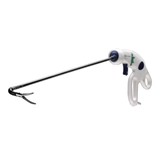
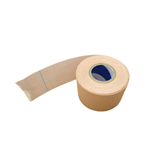
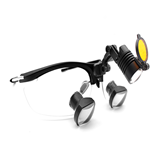
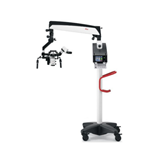
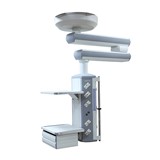
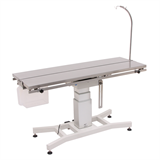

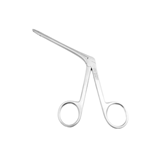
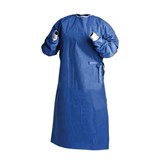
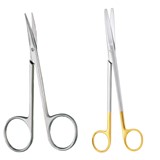
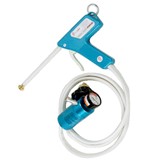
%20(1)-160x160-state_article-rel-cat.png)
